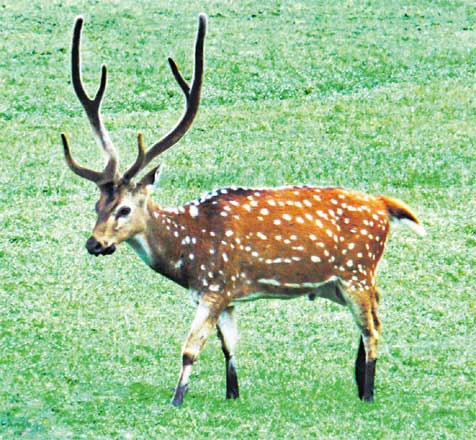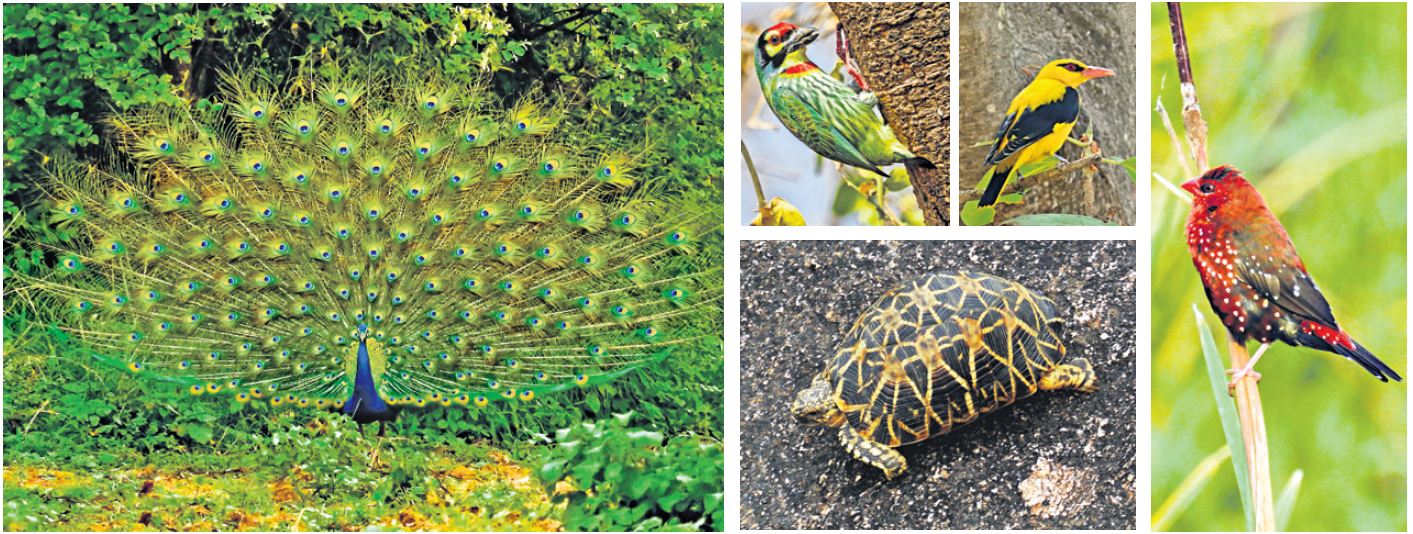Flora and fauna in harmony at University of Hyderabad
The sprawling University of Hyderabad campus is home to a wide variety of exotic plants and animals
Updated On - 30 December 2020, 01:17 AM
Hyderabad: Spread over 1,600 acres, the University of Hyderabad (UoH) campus is home to a wide variety of exotic plants and animals. Located in Gachibowli, this campus is widely regarded as the lung space of Hyderabad.
This status owes a lot to the nature lovers on campus, one of whom is Ravi Jillapalli, the founder of ‘Wild Lens’, a student group that works for the protection of biodiversity at the UoH. “As a youngster I used to move around with my Kodak camera enjoying nature and clicking photographs. Over the years, I realised the importance of preserving our rich biodiversity,” says Dr Ravi.
The campus biosphere includes a good number of deer and the Indian roller (Palapitta), the Telangana State animal and bird respectively. Hundreds of peacocks, flapshell turtles, wild boar, hare, rabbit, Indian grey mongoose, porcupines, monitor lizards, Indian rock python, cobras, Russel’s vipers – the list is quite long, though some like pangolins are not found anymore.
 The sprawling campus has a rich collection of exotic plants with medicinal properties and is also home to over 200 species of birds. Gum Arabic Tree, Green Chiretta, Neem and Cluster Figs are among these, while migratory birds too flock to the campus. Pied Cuckoos, Blyths Reed Warblers, Barn Swallows and so on are among those seen fluttering their wings on the campus.
The sprawling campus has a rich collection of exotic plants with medicinal properties and is also home to over 200 species of birds. Gum Arabic Tree, Green Chiretta, Neem and Cluster Figs are among these, while migratory birds too flock to the campus. Pied Cuckoos, Blyths Reed Warblers, Barn Swallows and so on are among those seen fluttering their wings on the campus.
“Poaching has been a major threat to the campus ecosystem over the years. Our group Wild Lens has a track record of handing over to the police 120 people involved in poaching and deforestation on the UoH campus,” says Dr Ravi.
Wild Lens was established in 2012 by Dr Ravi, Karthik Jirra, Vinod Sarimalla, Geetha Patil, Rahul Kumar V, Maruthi Mulaka, Divya Guptha, Chaithanya Jirra and Surya Prakash Rao.
Their activities include biodiversity awareness programmes, clean-up drives, bird watch programmes and so on, while the ‘Area Adoption Programme’ looks at gathering students and faculty as volunteers for a clean and green campus.
Dr Ravi, who was presented with the ‘Lake Warrior award’ by the NGO Dhruvansh for his efforts, says an expert team comprising students, teaching/non-teaching staff and others should be set up on UoH campus for protection of its biodiversity.
In fact, the campus has much more to it. It is a popular scouting area for trekking enthusiasts with the likes of rock formations like the Mushroom Rock, Cone Rock complex, VC Rocks, Temple Rock, Saucer Rock and the Buffalo Lake Cliff. The Mushroom Rock is one of the heritage rock sites in the city.
There have been several findings of historical and archaeological importance on the campus as well. The ‘Menhir Rock’ (near the main gate) dates back to 2000 BC. In 2004-05, a team under the supervision of Prof K P Rao of the varsity’s Department of History excavated five burial sites in the surroundings of the rock. The excavated materials including human skeletal remains, earthen pots and other iron objects, dated back to the Megalithic period.
All these features make UoH a unique ‘biosphere’ that deserves attention and protection. “A collective effort from the student community will be the biggest boost to our mission,” adds Dr Ravi, adding that the plantation drives on the campus should ensure use of native plants so as to make a huge difference in the long run.
“This is because exotic ones mostly fail to thrive in local conditions,” he says.

Now you can get handpicked stories from Telangana Today on Telegram everyday. Click the link to subscribe.
Click to follow Telangana Today Facebook page and Twitter .